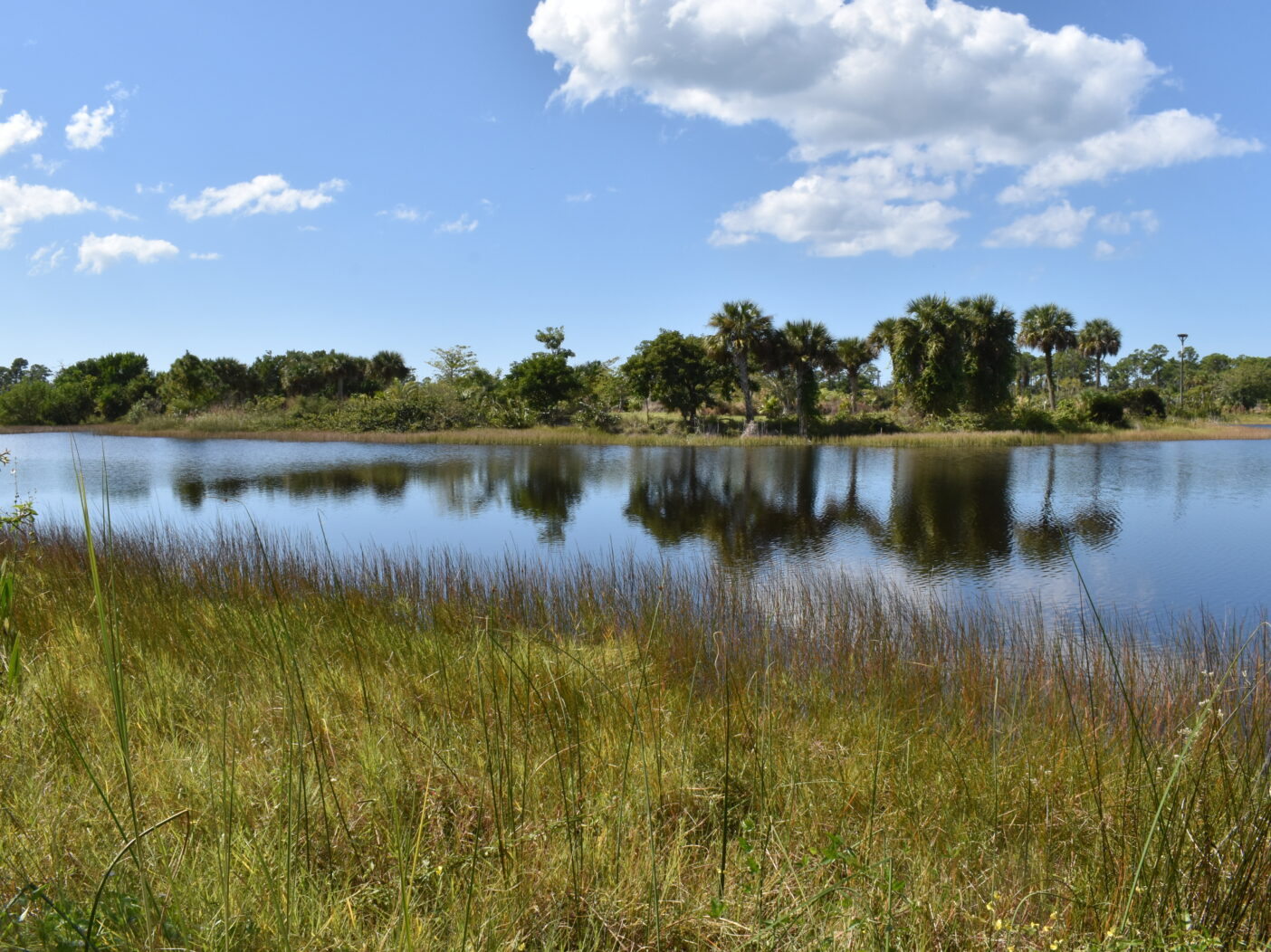

This simple demonstration shows the critical role plants play in keeping pollutants out of waterbodies.
An anhinga drying its wings. A turtle swimming. An egret stalking through the grass. These are the types of things you are likely to see when walking our lakes and the conservation land that preserves the beauty of wild Florida. While you enjoy the avian and aquatic life, you may not notice the central thing that makes it all possible: the littoral zone.
A littoral zone is the grassy, reedy, marshy perimeter along the banks of our waterways. Scientifically, a littoral zone is the transitional area between uplands and open water.

These are ideal places to study nature’s interconnectedness and how people impact water’s health based on how they manage land. These zones have a variety of aquatic and wetland plants that provide habitat for wildlife, prevent erosion, and control pollutants. That last point is key.
Nutrient pollution is a major problem here in Southwest Florida. Many water-related issues, from harmful algal blooms in the Gulf to yucky ponds in our backyard, can be traced to excess nutrients. These are substances such as nitrogen and phosphorus that can benefit plants in small doses, but in large ones, they wreak havoc on an ecosystem. Fertilizer, grass clippings, leaf litter, and other organic matter release nutrients into the environment. A sudden influx of these nutrients is a primary cause of algal blooms, which negatively affect both the health and aesthetics of the water. Thankfully, that’s where littoral zones come in. Littoral zones control pollutants by slowing and absorbing nutrients from the surrounding upland. You can think of them as water filters.
So, what exactly are these hard-working plants? Wetland grasses comprise the bulk of littoral zones. They may not look like much compared to the flowering and foliage plants adorning the cultivated gardens, but they are critical to ecosystem health, and, we think, beautiful in their own way. Here are a few examples of the species that we’ve planted in the Garden’s littoral zones to protect water, shelter wildlife, and prevent shoreline erosion:

Sand cordgrass (Spartina bakeri) and knotted spikerush (Eleocharis cellulosa) are dominant species in marsh ecosystems. They provide habitat for fish, invertebrates, birds, and other wildlife. Both are used in stormwater ponds as a buffer along the water’s edge to prevent organic material, such as grass clippings and fertilizer, from entering the water. The thick, fibrous root system of cordgrass holds soil in place, preventing erosion.

The lanceleaf arrowhead (Sagittaria lancifolia) is an emergent wetland plant, meaning its roots are in the water and its stems/leaves are above. Its tubers and seeds are food for birds and small mammals. The plant is well known for its ability to tolerate and absorb high levels of nutrients such as phosphorus. Municipal water treatment systems often use lanceleaf arrowheads, so you know they can pull their weight.
Littoral plantings are used in stormwater management as an effective method to curb nutrient pollution of our waterways, but it’s not the only method. In fact, we argue that prevention is the best strategy. The decisions we make on land have a direct impact on the quality of our water.
Water-friendly practices include picking up grass clippings, pet waste, and landscaping with plants that require less fertilizer (native plants and those that come from similar climates such as the Caribbean tend to grow well without soil additives).
Without littoral plantings, the lakes and wetlands in our Preserve wouldn’t be as vibrant, populated, or beautiful. They are an essential, but often overlooked, part of any wetland habitat. With proper planting and prevention methods in place, we can keep Florida waterways clean and healthy forever. Next time you are at the Garden, check out “Journey of a Raindrop,” our self-guided stormwater audio tour. It begins in the parking lot and ends at the White Birding Tower. You can access the tour through this link or by scanning a QR code on the tour’s signage.

About the Author
Kyle Possai is the Education Specialist at Naples Botanical Garden. When not at the Garden, he enjoys making music through guitar and piano.


